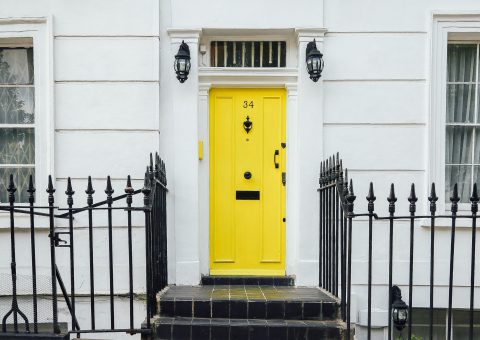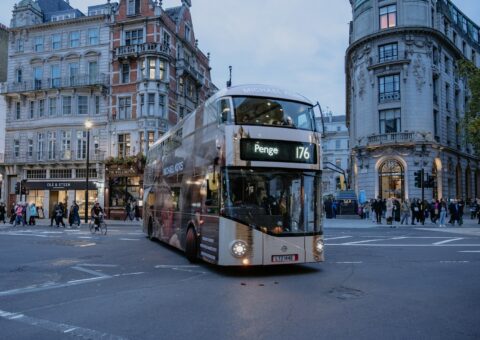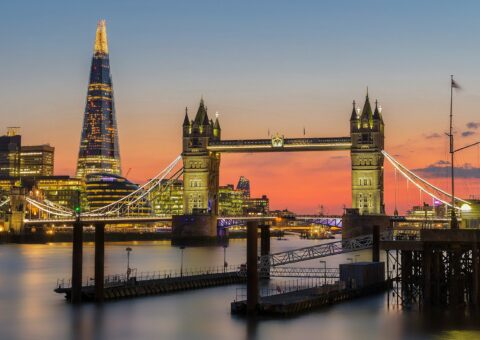Digital Nomads in Berlin: Everything You Need to Know
Joining the digital nomads in Berlin is massively appealing for many types of people. And along with Munich and Hamburg, it’s one of the best places to live in Germany.
But before you decide if Berlin’s hipster haven is for you, there are (of course!) some important things you need to think about.
So in this guide, your good friends at Homelike have covered them all, including neighborhoods, prices, restaurants, bars, what it’s like to live in Berlin, and all the varied fun and adventure the city has to offer.
We’ve also covered topics that are specifically important for digital nomads—including visa options, quickly finding a rental property, top cafes for working, and how you can swiftly settle into a community of like-minded people.
For digital nomads in Berlin, we’ve covered everything you need to know. One of the best places in the world for remote workers, we totally recommend living here… and soon, you’ll know exactly why.
So grab a currywurst, slip into your rave gear, and come join the pulsating party. Today, Homelike are taking a remote-working tour around one of the most exciting cities on the planet… and you’re coming with us!
Why Berlin is a great place for digital nomads
For digital nomads in Berlin, the biggest pros and perks of living in the city include…
- It’s surprisingly affordable: most digital nomads avoid western Europe, because most of western Europe isn’t budget-friendly. Okay, Germany isn’t as cheap as Vietnam, but compared to most western European cities, Berlin is a pretty low-cost place to live.
- It’s endlessly fun: Berlin’s people are fun. Berlin’s places are fun. Berlin’s events are fun. You’ll always find something to do in the city, you’ll always find people to spend time with, and you’ll never be bored. The city offers a massive range of things to do.
- The nightlife is possibly the best on the planet: some digital nomads in Berlin head to the city exactly for this reason. If you like non-stop nightlife and all-night raves, you won’t find anywhere better. We’ll cover this in depth later in our guide.
- It’s pretty easy to be healthy here: as a digital nomad, you’re perpetually on the road—so finding health-conscious places is often a priority. In Berlin, you can find healthy food, healthy hobbies, and lots of healthy people to spend time with.
- Huge numbers of places to work from: Berlin has a very big remote-working scene, and you’ll always find people working in cafes and co-working spaces (we’ve covered the best of them soon). For feeling comfortable as a digital nomad, Berlin is incredible.
- It’s a young, trendy, hip city: most digital nomads are relatively young (and probably consider themselves to be relatively cool). In Berlin, you’ll be surrounded by like-minded people, and you’ll find it very easy to make friends.
- It’s very varied and diverse: for foreign-born digital nomads in Berlin, this is a big perk. The city is home to people from around 170 different nations—so no matter where you’re from, you’ll be welcome, comfortable, and (hopefully!) happy here.
- It has fantastic public services: in Berlin, you get a top-notch quality of life. The city is clean and safe, healthcare is some of the best in the world, and the place prioritizes recycling, public transport, and healthy living.
- It’s brimming with inspiration: you’re a digital nomad, so you’ll probably benefit from living in a creative place. There aren’t many more creative places than Berlin… if you can’t find artistic inspiration here, you can’t find artistic inspiration anywhere.
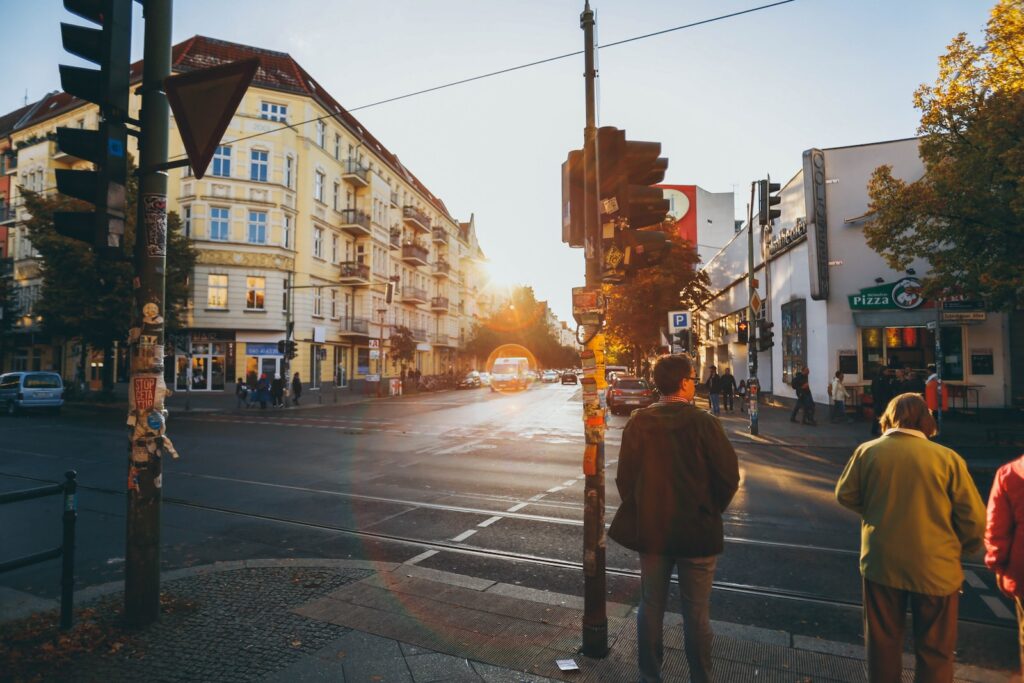
Why Berlin isn’t always a great place for digital nomads
Overall, digital nomads in Berlin can look forward to way more pluses than negatives.
But like any other place on the planet, the city has its drawbacks. For digital nomads in Berlin, the biggest drawbacks of living in the city are…
- Finding a place to live: for finding a good home, this is possibly the most irritating city on the planet. You could spend months trying to hunt down a good place to live… so for digital nomads, it’s much easier serviced apartments in Berlin.
- It’s very busy: maybe you don’t even consider this a flaw. But as a digital nomad, it’s nice to find occasional pockets of peace. In central Berlin, you’ll struggle to find them—you’ll always be surrounded by lots of action, events, and bustle.
- Lots of bureaucracy: as a digital nomad (rather than a typical expat or citizen), this might not affect you too much. But Berlin loves bureaucracy, so expect unnecessarily-long administrative ordeals (such as the anmeldung and the schufa).
Is a visa required for digital nomads in Berlin?
Of course, some digital nomads just arrive in Germany on a tourist visa (or on a no-visa-needed exemption period), and work remotely without declaring their income. And, yes, that’s absolutely possible, it’s absolutely ‘normal,’ and lots of people do it.
But depending on where you’re from, that’s not necessarily legal—and because it might land you in major trouble, we can’t encourage or recommend it. Instead, it’s best to look at your official options…
Germany doesn’t have a specific digital nomad visa (but because lots of countries are rolling them out, it hopefully won’t be long until Germany does too). That said, the nation does offer a German Freelance Visa, which is the best option for most digital nomads in Berlin. It initially allows you to stay in the nation for three months—but it can be extended for up to three years.
In order to qualify for the German Freelance Visa, you need health insurance, a place to live, a provable income stream (of rental costs plus health insurance costs plus at least €449 per month), and at least one client in Germany.
You of course have other options, depending upon where you’re from and how long you intend to stay. You can find a big helpful collection of all the different visa options here.
If you’re moving from within the EU/EEA area (and you have the passport to prove it), you’re free to live and work in Germany with very little bureaucracy. Within three months of entering the nation, you’ll need to register your presence in the country, and declare your address… but you won’t need to tackle any more administrative tasks. Simple!
Best neighborhoods to stay in Berlin
Digital nomads in Berlin have plenty of neighborhoods to choose from. But some districts are better suited to remote workers than others… so here are the first areas you should consider:
- Mitte (estimated average monthly rent cost, €1,500): the very center of the center, Mitte is home to lots of the city’s most famous sites, and about 300 million tourists. It’s a good pick if you like bustle, or if you’ll only be around for a short while.
- Kreuzberg (estimated average monthly rent cost, €1,300): the trendiest part of the city, this place offers all the Berlin hipster clichés, but turned up to the maximum. It’s perfect if you like edgy venues, trendy events, and finding unusual things to do.
- Friedrichshain (estimated average monthly rent cost, €1,300): a pretty good compromise between the non-stop throng of Berlin’s bustle, and some corners of quiet. For expats in Berlin, Friedrichshain offers parties, green spaces, and a trendy vibe.
- Charlottenburg-Wilmersdorf (estimated average monthly rent cost, €1,200): made up of two neighboring districts, this western region is massive. It’s good for expats who want green spaces, a little peace and quiet, and a pretty upmarket existence.
- Pankow (estimated average monthly rent cost, €1,100): leafy, largely relaxed, and excellent for families, Pankow is a little different to most other Berlin districts. Its vast sprawl offers many different vibes—but, generally, it’s great for couples and older people.
- Prenzlauer Berg (estimated average monthly rent cost, €1,100): if you’re moving with kids, this part of Pankow is perfect. The neighborhood offers playgrounds, green spaces, child-friendly cafes, safe housing, and even the MACHmit! Museum for Children.
- Lichtenberg (estimated average monthly rent cost, €820): an ideal option for a cut-price life, Lichtenberg isn’t as exciting as most other areas we’ve mentioned. But it’s relatively central, it has a multicultural population, and it’s full of green spaces.
We’ve featured lots of extra detail on all these Berlin districts (and more!) in our guide to the best neighborhoods to live in Berlin.
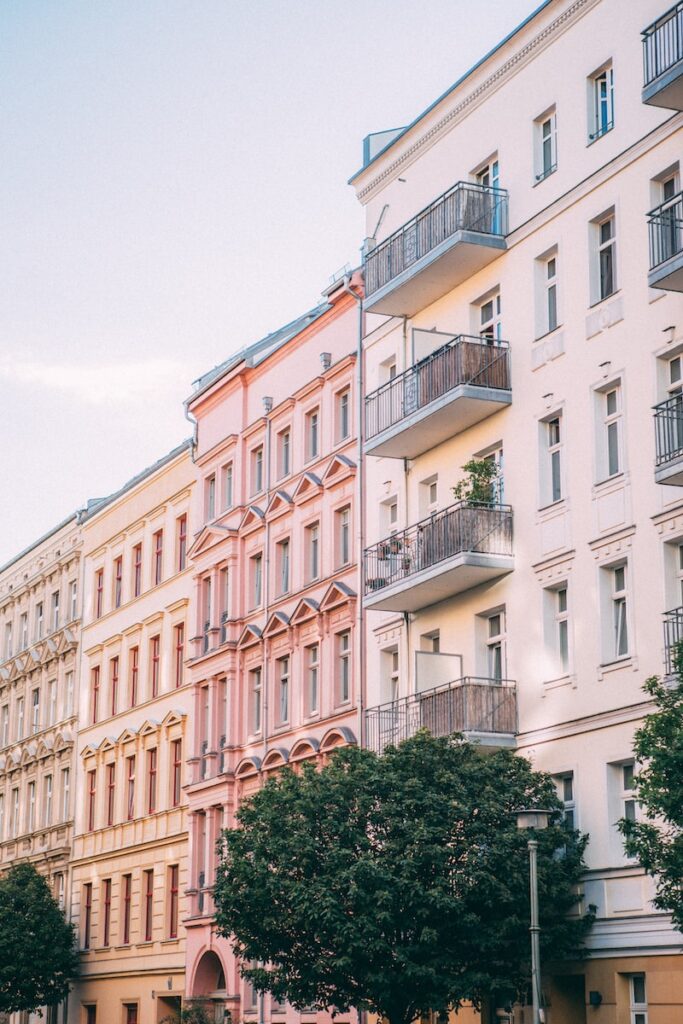
How to find a rental in Berlin to spend a few months as a digital nomad
For digital nomads in Berlin, this is a massive headache, and it never runs smoothly.
Finding a nice place to live is almost impossible, and Berlin’s real estate market is notoriously oversaturated. Expect to spend weeks or months viewing substandard apartments, queuing for your viewings, and outbidding other potential tenants. And if you do find a place, it likely won’t be furnished, and it probably won’t be worth whatever you spend on it.
When finding a place to live, you must also decide if you need to pay kaltmiete or warmmiete… and you need to work out exactly what the difference is.
Because of all the stress and fuss, the easiest option for digital nomads in Berlin is moving into a serviced apartment. If that sounds appealing, we have plenty of spaces on our site—and they’re all ready to move into today. They’re fully-furnished, comfy, convenient and cozy, and they’re all perfect places to call home.
For people who are only planning to stay in the city for a short while, we also have lots of homely short-term rentals in Berlin. And if you’re on the hunt for a small home, we have lots of studios too!
All of that said, we don’t want to sound too dour… and with some stubbornness and resilience, it’s of course possible to find a Berlin apartment in the traditional way (here are our top 6 secrets for doing exactly that).
For finding an apartment in the normal way, the best and most popular resources are WG-Gesucht, Immobilien Scout and Immowelt. On all three sites, you can find various types of houses, studios and apartments.
Facebook is another good outlet, and you’ll find various groups offering several types of rental properties. This group is a good place to start… but you’ll find many more.
Living in a hostel is also a good solution for some people—many digital nomads in Berlin like this option for the sociability, the ease, and the low cost of living. Some of the best hostels for living in Berlin include Pfefferbett Hostel, EastSeven Hostel, and Circus Hostel.
Best areas for restaurants and bars in Berlin
Digital nomads in Berlin have endless options for eating and drinking in the city. Some of the best neighborhoods for restaurants and bars are…
- Neukölln: Neukölln is pretty similar to Kreuzberg, but not so self-consciously trendy, and a little more affordable. It offers lots of global eats, including a massive amount of Middle-Eastern stuff. Two of its best eateries are Taverna Argo and New Marin.
- Mitte: as you’d expect from any very-central district, Mitte has a huge number of places to eat, with great variety. Three of its best spots are Curry Mitte, Lebensmittel Mitte, and Salamat… while Arminius Market Hall is great for interesting eats and hyper-local stuff.
- Schöneberg: this outskirt district often falls off the radar for digital nomads in Berlin. But it offers lots of classy and upmarket restaurants, including elegant Amera (with some lip-smacking seafood), the Nepalese specialities of Durbar, and Antonello’s Cevicheria.
Best areas for Berlin nightlife
For some digital nomads in Berlin, this is one of the best and most appealing parts of living in the city. For never-ending nightlife, these are the city’s must-visit districts…
- Kreuzberg: possibly the most famous nightlife neighborhood on the entire planet, you’ll always find drinkers and dancers here. Check out Tresor (among the best nightclubs in Berlin), and equally-famous Wild at Heart and Club der Visionäre.
- Friedrichshain: Kreuzberg’s next-door neighbor, Friedrichshain is a little more laid-back than its crazy cousin, but it’s still a bustling nightlife hub. It’s home to the ultra-famous Berghain, along with many other great venues. Check out Primitiv Bar and Booze Bar.
- Winterfeldtplatz: popular with LGBTQI digital nomads in Berlin, this neighborhood is home to the city’s annual pride festival. Some of its best venues include friendly and welcoming Heile Welt, cocktail-stuffed Green Door Bar, and dimly-lit Incognito.
Top things to do in Berlin
Digital nomads in Berlin will never run short of things to do—this is one of the most action-packed cities on the planet. Here are some of the best activities and adventures:
- Party party party: we’ve already mentioned drinks and dancing in our nightlife section… but if you’re not partying in Berlin, you’re not really in Berlin. Even if it’s not usually your thing, make sure you embrace the alluring underground subculture of Berlin’s parties.
- Explore the arts: for digital nomads in Berlin, the artistic side of the city is of course a big draw. The city has more than 400 galleries, around 150 theaters, varied events every day, many arthouse cinemas, several pop-up venues, and loads of year-round festivals.
- Relax in a big bunch of green spaces: Berlin is very green—around 30% of the city is made up of parklands and woods. Highlights include the central sprawl of the zoo-filled Tiergarten, the once-an-airfield Tempelhofer Feld, and many family-friendly spots.
- Mosey around on two wheels: for health-conscious digital nomads in Berlin, zooming around by bicycle is one of the city’s most fun activities. The city has lots of (both long and short) waymarked routes, with canalside stretches, riverside stretches, and more.
- Merge the west with the east: until recently, Berlin was divided into two halves. Learn all about it at East Side Gallery, Checkpoint Charlie, and many of the city’s excellent history museums. Berlin also offers many more insights into history and heritage.
- Make friends: as a digital nomad, making friends is important. And as we’ll come to soon, finding buddies in Berlin is outrageously easy. Whoever you are, you’ll find a welcoming community here, and you’ll enjoy a friend-filled existence.
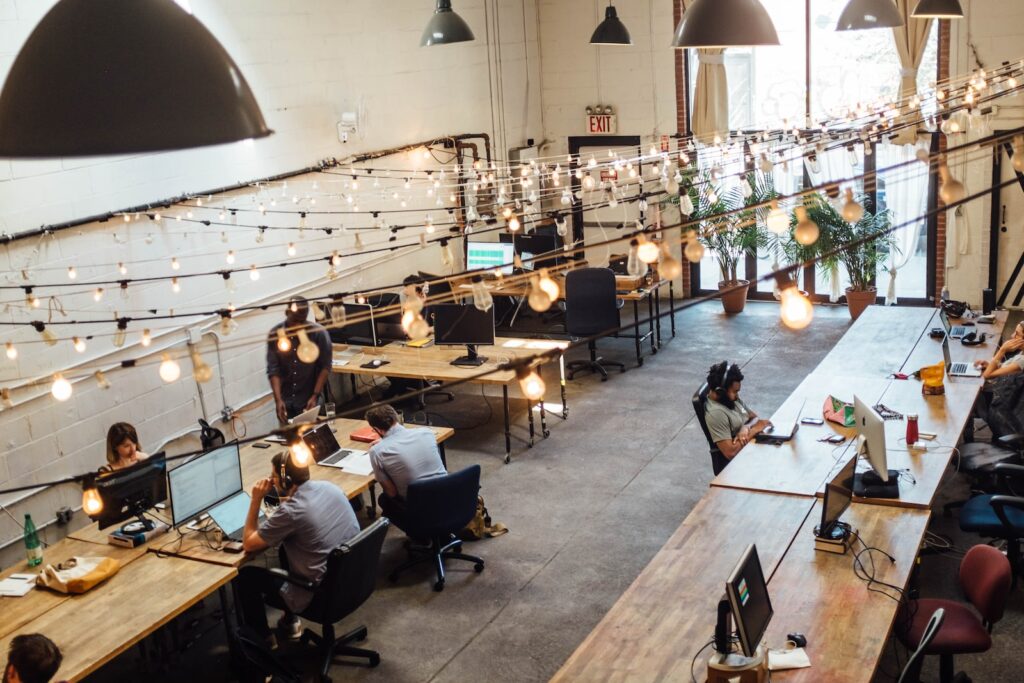
Best cafes and co-working spaces for working in Berlin
Digital nomads in Berlin have endless choices for places to sit around and plink about on their laptops.
Some of the top co-working spaces for digital nomads in Berlin include…
- Betahaus: Kreuzberg’s betahaus is just as trendy and edgy as you would expect from its neighborhood. Once a warehouse, this place is now a so-called ‘global community’ where you can enjoy four floors of space, a nice cafe, and lots of great events.
- MotionLab.Berlin: not too far from betahaus, MotionLab sits close to lots of green spaces, and the city’s river. Inside, the solar-powered place has 3D printers, lots of interesting entrepreneurs, and an inspiring range of other remote workers.
- juggleHUB: one of the best co-working spaces for child-bearing digital nomads in Berlin, this place offers drop-in childcare, tasty coffee, networking events, and a very clean space. It’s cozy and comfortable, and the WiFi is exceptionally fast.
And some of the most popular (and appropriate!) cafes for digital nomads in Berlin are:
- Bonanza Coffee Roasters: this place has a minimalistic, almost-clinical design. So it might not be the coziest cafe, but it’s brilliant for getting some work done. It also offers plug sockets, large tables, and some of the tastiest coffee in the city.
- Father Carpenter: this brunch spot gets very busy from Friday to Sunday, so it’s best to only visit midweek—and don’t expect to hang around for hours. But it serves the best breakfast food (and coffee) in the city, and it has a beautiful courtyard. You’ll love it.
- Distrikt Coffee: pretty popular with digital nomads in Berlin, this super-central cafe is easy to access from various other districts. They offer great sandwiches, cakes and drinks—and the plant-filled place is much bigger than it looks from outside.
Public transport in Berlin
Digital nomads in Berlin need absolutely no access to a car… and because the city’s public transport is so good, most of Berlin’s permanent residents don’t even have one.
This extensive, reliable and citywide system is made up of five different modes of transport:
S-Bahn (they’re traditional overground trains), U-Bahn (these are mainly underground trains), trams, buses, and ferries (though these ferries are pretty rare, and you might never use them).
The transport is broken down into a simple zone system—and what you pay is dictated by which of these three zones you’ll be traveling within. If you’ll be using the system regularly, it’s best to buy a monthly or weekly pass instead of paying for separate tickets. A one-month three-zone pass, for example, only costs €107, so it’s all pretty affordable.
The city’s public transport system is also very well organized. Signs are easy to follow, the various types of transport connect up well, and pretty much everything is written in English (in addition to German).
Berlin is also great for exploring by bicycle. Lots of the city’s residents get around on nothing but two wheels—the infrastructure is excellent, the city is very flat, and there are many places throughout the city where you can rent bikes.
The cost of living in Berlin
If you join the digital nomads in Berlin, here are the average costs you can expect to encounter:
- 1-bedroom apartment in the city center: €1,223
- 1-bedroom apartment outside of the city center: €897
- 3-bedroom apartment in the city center: €2,203
- 3-bedroom apartment outside of the city center: €1,639
- One-way ticket on local public transport: €3
- Regular monthly pass for local public transport: €107
- Meal for 1 at an inexpensive restaurant: €12
- 3-course meal for 2 people at a mid-range restaurant: €60
- Large draught domestic beer in a bar or restaurant: €4
- Regular cappuccino in a cafe or restaurant: €3.20
- Regular liter of milk from a supermarket: €1.05
- Loaf of white bread from a supermarket: €1.52
- 12 regular eggs from a supermarket: €2.75
- 1kg of chicken breast filets from a supermarket: €9
As always, we’ve taken these figures from Numbeo, your best and most reliable resource for finding living costs across the planet.
The expat community for digital nomads in Berlin
Because there are lots of expats, tourists and digital nomads in Berlin, it’s super easy to make friends in the city. It’s estimated that around 30% of Berlin’s residents are non-natives… and locals are also very welcoming, and very easy to make friends with.
If you specifically want to make friends with other digital nomads in Berlin, here’s a Facebook group for doing exactly that. The co-working spaces we’ve listed above are also good places to buddy up with other remote workers in the city.
But for making friends with a wider range of people, you have many different options. Groups such as this one and this one are helpful for making friends with other expats in Berlin, while this events page is filled with both locals and foreigners (and a massive variety of different events).
If you want to find particular friends with particular hobbies, try searching Facebook for activity-specific groups. Here’s a group for techno fans in Berlin, here’s a group for people who like running, and here’s a Berlin book club. Because the city is such a diverse, artistic, and open-minded place, you’ll always be able to find someone who’s interested in whatever you’re interested in.
Couchsurfing (as always!) is another good resource, and the platform is hugely popular in the city. On the site, you can find locals, travelers, short-term-stayers, and even lots of events.
It’s also worth noting that most locals (especially younger locals) speak very good English—so penetrating the local population is much easier here than it is in most other places.
In short, Berlin is one of the world’s best cities for making friends, and you’ll never struggle to find company here. For digital nomads traveling solo, it’s the perfect choice.
Digital nomads in Berlin: final thoughts
As you can probably tell by now, joining the digital nomads in Berlin is a pretty exciting prospect… and no matter where you’re from or how long you’re staying, it’s a move we totally recommend.
The only real Berlin problem is finding a place to live—and you might not fully understand just how stressful it can be until you’ve endured the experience yourself.
To save you the hassle of dredging through the real-estate drudgery, we have lots of serviced apartments and flats on our site. They’re all homely, welcoming and cozy—and they’re all ready to be your home today. If you’ll only be around for a short while, we have lots of short-term places too!
Thanks for reading, thanks for stopping by at Homelike, and we’ll see you in Berlin!


